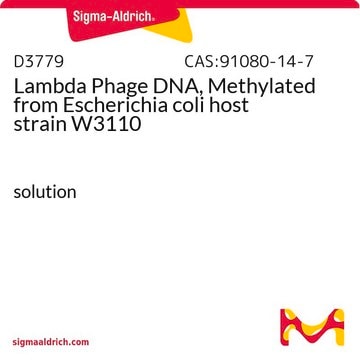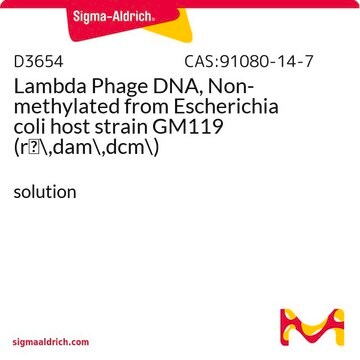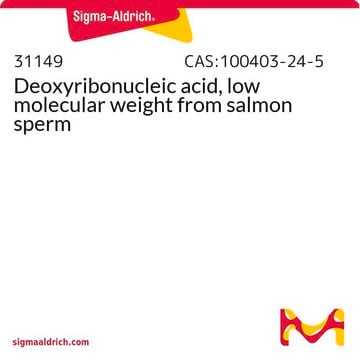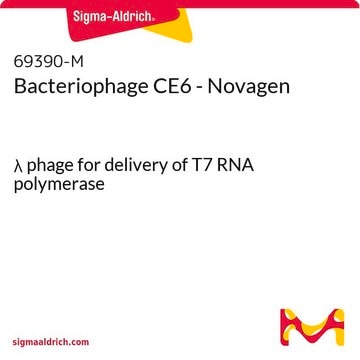D9768
Lambda Phage DNA, Methylated from Escherichia coli host strain W3110
lyophilized powder
Selecione um tamanho
R$ 323,00
Selecione um tamanho
About This Item
R$ 323,00
Produtos recomendados
grau
Molecular Biology
for molecular biology
Formulário
lyophilized powder
peso molecular
31.5 × 103 kDa
48 kb
adequação
suitable for substrate for restriction endonucleases
temperatura de armazenamento
2-8°C
Procurando produtos similares? Visita Guia de comparação de produtos
Descrição geral
Especificidade
Aplicação
Infecting E. coli strain W3110 with lambda C1857 strain creates E. coli lysogen cultures. The phage is released from E. coli cell pellets by lysing with a high salt buffer, pH 8.0. The crude mixture is passed through a series of enzymatic steps, multiple cesium gradients, and phage DNA is dialyzed against 1 mM Tris-HCl, pH 8.0, and 1 mM magnesium chloride. The DNA is finally extracted by phenol-chloroform solution.
Definição da unidade
Reconstituição
Incubate the DNA sample vial at 65 °C for 4 hrs with frequent mixing.
After reconstitution, the product should be stored at -20 °C.
produto relacionado
Código de classe de armazenamento
11 - Combustible Solids
Classe de risco de água (WGK)
WGK 3
Ponto de fulgor (°F)
Not applicable
Ponto de fulgor (°C)
Not applicable
Equipamento de proteção individual
Eyeshields, Gloves, type N95 (US)
Escolha uma das versões mais recentes:
Certificados de análise (COA)
Não está vendo a versão correta?
Se precisar de uma versão específica, você pode procurar um certificado específico pelo número do lote ou da remessa.
Já possui este produto?
Encontre a documentação dos produtos que você adquiriu recentemente na biblioteca de documentos.
Os clientes também visualizaram
Active Filters
Nossa equipe de cientistas tem experiência em todas as áreas de pesquisa, incluindo Life Sciences, ciência de materiais, síntese química, cromatografia, química analítica e muitas outras.
Entre em contato com a assistência técnica









